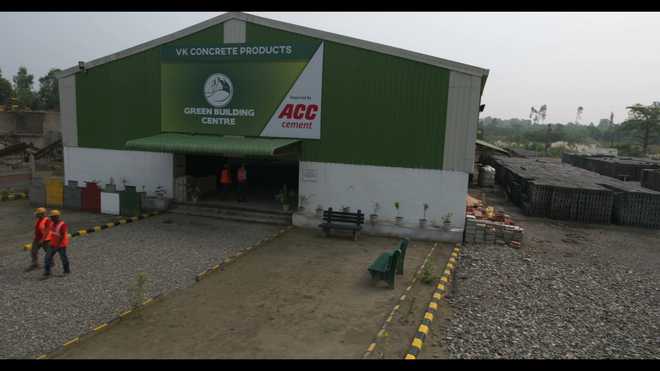
With the construction industry panting to keep pace with the rapid urbanisation and the momentous target of achieving housing for all by 2022, building environment friendly buildings can no longer be ignored. This has led to the availability of “green” building material options in the market. Fly ash bricks, blocks, interlocking pavers, tiles etc are the backbone of the sustainable green buildings. These apart from blocks and pre-fabricated materials for the construction of toilets and affordable houses in the hinterlands are fuelling the sustainable habitation movement at present. In order to take the sustainable building solutions available in the demand intensive rural areas ACC group is spearheading the Green Building Centre project under which units where these new-age building materials are produced are set up in the rural areas. The company has already built several such centers which are operational in the states of Uttar Pradesh, Madhya Pradesh, Maharashtra and Rajasthan. Danish Rashid, General Manager – ACC Limited North and Head, GBC shares insights on these green centres and plans for the future. Excerpts:
How are green building materials better than the traditional materials?
In traditional brick kilns top fertile soil was used for making bricks which made the area barren and besides the pollution generated in the kiln to bake the bricks made living conditions bad in the area. The green building materials are produced with minimum damge to the environment and utilise waste produce maintaining the soil and air quality. These are durable and easy to maintain which makes their use cost efficient in the long run.
What is the aim and goal that GBCs are tuned for?
The Green Building Centres are based on the triple bottomline approach of delivering social, environmental and financial performance. These are also an endeavour to support the LH 2030 sustainable development goals. These aim to promote sustainable construction through a business model that provides affordable and green building materials in rural and semi urban India.
These centers provide lucrative entrepreneurial opportunity to small entrepreneurs all across the country besides making rural population aware of the eco-friendly building options and low-cost construction techniques. Bridging the massive demand and supply gap in rural housing as well as sanitation needs is the main focus of these centres. use of eco-friendly building materials and create business opportunities for them to network with the local government and the community.
What is the business model for these centres?
ACC has worked out a business model in which the company provides technical and quality control support to its partners or associates to set up a unit. An associate needs to make an investment of Rs 2 to 2.5 crore in setting up a unit that starts yielding profits immediately.
While the model helps bring together several individual vendors in an organised unit it also provides builders with a one-stop-shop for their queries regarding adopting sustainable construction methods.
How is the quality ensured?
There is no compromise on quality of the products manufactures in any of these centres. Quality control teams keep a strict vigil to ensure that each piece manufactured in the unit conforms to the laid down norms. Right from the proportion of fly ash, cement and water put in the machines to checking the strength of bricks, pavers and slabs every step is monitored as per the highest industry standards.
What is the output and environmental impact that each such centre provides?
The GBMC concept is to bring holistic and multiple benefits to the area where it is set up and to the local community. Providing good quality sustainable building material for rural housing needs is one of the major goals as these centres are making new and innovative building solutions available at the grassroots level. If there is awareness at that level then the switch to the economy friendly construction techniques will be very swift and impacting. Each centre helps build approximately 100 houses per month besides saving 770 MT of CO2 emission per year. The use of fly ash in making bricks means that around 6480 MT of top soil is saved per year and 4200 MT of waste is utilised per year. These are also bolstering the local economy by providing 30 direct jobs and 120 indirect ones in the local areas. Besides the centres are also the nodal centres for training and skilling local communities about new building practices as well as factory work.
What is the target that you are working towards with GBCs?
The goal is to facilitate the construction of 1 million affordable houses and toilets in rural India over the next 10 years. Currently there are 24 operational centres and by the end of 2017 as many as 50 partners are expected to be operational and all the GBCs together will contribute to the construction of around 19,000 houses and toilets all across the country
SOURCE- THE TRIBUNE


